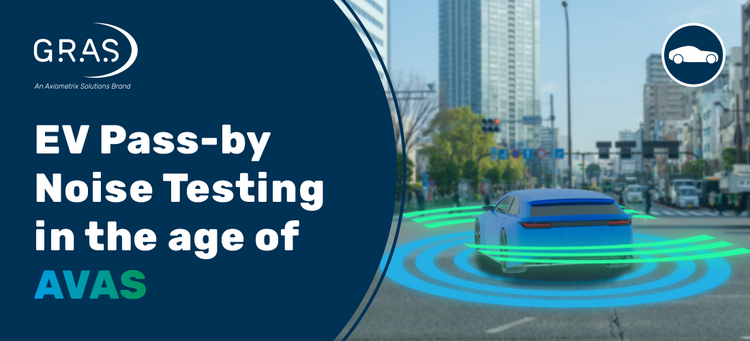The popularity and growing offering of electric vehicles (EVs), are changing many aspects associated with vehicle sound and acoustics (see our posts related to the in-cabin soundscape of the EV, for example). The classic issue of pass-by noise testing is no exception. Still a crucial aspect of automotive design and regulation, it has evolved to ensure that EVs (and other vehicles) not only meet the maximum noise limits set by various national and international regulations, but also adhere to new minimum noise requirements.
EVs Add a New Challenge to Noise Regulation
Electric vehicles, known for their quiet operation, bring a new challenge in balancing the need for noise reduction with pedestrian safety. European Union (EU) and other regulations now require EVs to generate a certain level of noise, in contrast to traditional vehicles where the focus has been on minimizing noise pollution. To further this end, Acoustic Vehicle Alert Systems (AVAS) have become a compulsory component for EVs. These systems are designed to produce audible noise at lower speeds where EVs are typically quieter. Many auto manufacturers have seized the opportunity to make carefully designed sound an integral part of their overall branding. But what are the ups and downs of new noise and sound limits?
What are the minimum sound levels established by the new regulation for EVs/AVAS?
In Europe, the main pieces of legislation that regulate the minimum sound levels for electric vehicles (EVs) with Acoustic Vehicle Alert Systems (AVAS) are Commission Delegated Regulation (EU) 2017/157, the EU Regulation on the Sound Level of Motor Vehicles (EU 540/2014), and ECE R138. Between them, they set the minimum sound level for AVAS at 56dB at speeds up to 20km/h. Depending on which comparison charts you look at, this is equivalent to the sound of a home refrigerator, a dishwasher, or an electric toothbrush.
The Importance of Precise Noise Measurement
Testing for minimum sound levels of pass-by noise is carried out the same way as for maximum levels. Whether documenting minimum or maximum sound levels, accurate noise measurement is essential in pass-by noise testing, and using high-quality microphones capable of capturing a wide range of frequencies with low uncertainty is a must. In our brochure on Pass-by Noise Testing, available for download on this page, we describe the different conditions under which the tests must be performed, and recommend suitable microphones and other equipment for running the tests.
Staying Ahead in EV Acoustic Testing The brochure on Pass-by Noise Testing for automotive applications covers several key areas:
· Environmental Noise Regulations
· Testing Methods and Challenges
· Importance of Microphone Selection
· Microphone and Test Equipment Recommendations
· Acoustic Vehicle Alert Systems (AVAS)
Download the brochure here
Learn more about Pass-by Noise Measurement according to ISO 362 here








